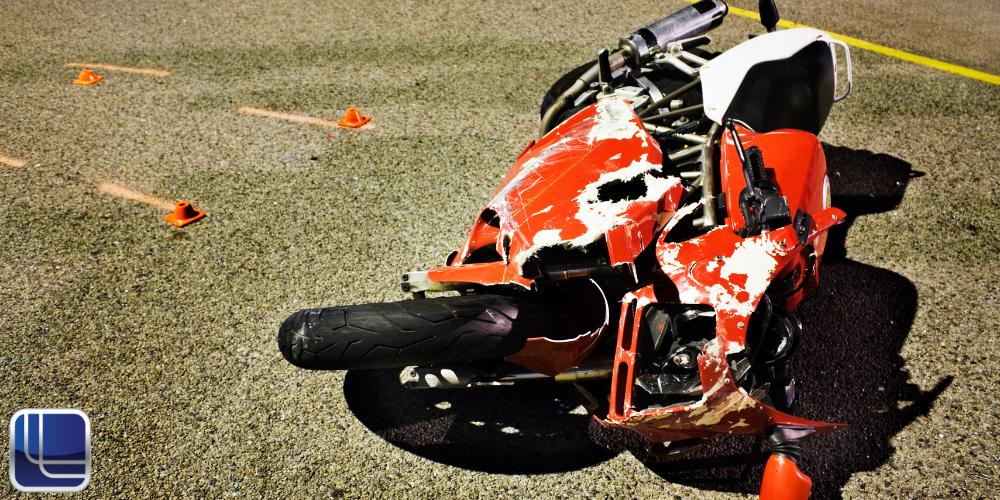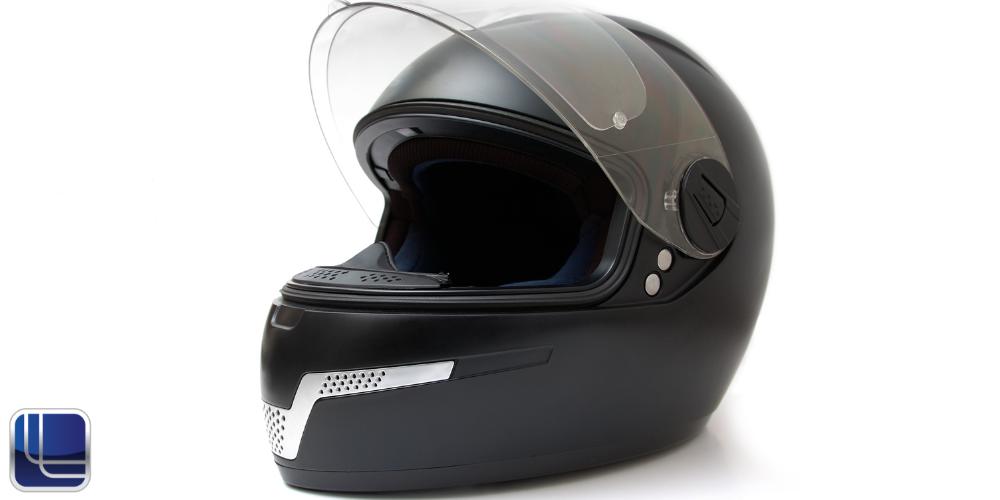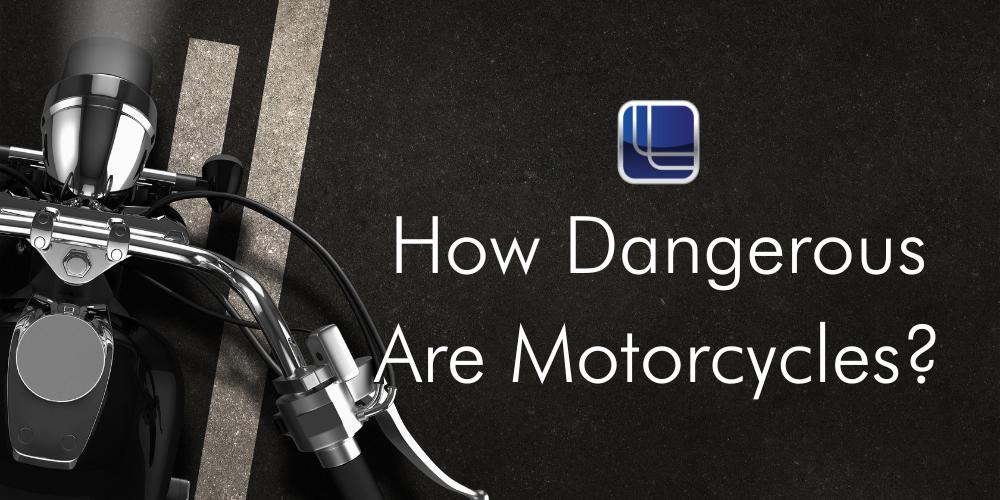Most people understand that, by their very nature, motorcycles are inherently more dangerous than passenger vehicles. This is true for many reasons, including their small size, lack of external protection, and others. But exactly how dangerous are motorcycles compared to cars and trucks? And how much more likely are riders to experience serious injury or death?
At Lipton Law, we have decades of experience and a glowing track record of handling motor vehicle accident cases, including motorcycle accidents. If you are a motorcycle rider who was injured due to another driver’s negligence, you deserve justice for your injuries. Schedule a free consultation with the Michigan motorcycle accident lawyers at Lipton Law today. Call our office at 248-557-1688 today to schedule.
Are Motorcycles Dangerous?
Motorcycles are generally considered more dangerous than other enclosed vehicles. This is a perception backed by numerous studies and statistics. Statistics consistently show that the rate of fatalities and serious injuries is higher for motorcycle riding than for driving cars, relative to the distance traveled.
This increased risk is not just a matter of perception but a reality reflected in traffic accident reports and healthcare data. The consequences of accidents involving motorcycles are often more severe, leading to a higher incidence of fatal outcomes or long-term disabilities for the riders involved.
Despite the risks, many people are drawn to motorcycles for the sense of freedom, agility, and the unique driving experience they offer. While the dangers are real, they can be mitigated to a certain extent through safe riding practices, proper training, and the use of protective gear. Nonetheless, the inherent risks associated with motorcycle riding make it a mode of transport that demands respect, caution, and a high level of responsibility from those who choose to ride.
Why Are Motorcycles So Dangerous?
Motorcycles are widely considered to be more dangerous than the average motor vehicle. This is primarily due to their physical design, the vulnerability of riders, and how motorcycles interact with other road users and environmental conditions.
What Affects Rider Safety on Motorcycles?
Unlike cars, motorcycles lack a surrounding protective frame, airbags, and other safety features designed to absorb impact forces during a collision. This leaves a motorcycle rider directly exposed to the force of impacts and the road itself, significantly increasing the risk of injury or death.
Additionally, motorcycles are less stable than four-wheeled vehicles because they have only two wheels. This instability makes them more susceptible to accidents caused by road conditions like wet or uneven surfaces, debris, and potholes.
Reduced Visibility
Motorcycles are smaller and less visible to other drivers, especially in their blind spots. This can lead to accidents when other motorists inadvertently pull into a motorcycle’s path or change lanes without noticing a nearby motorcycle.
Riding Experience
Operating a motorcycle requires more skill and coordination than driving a car. Inexperience, overconfidence, or engaging in risky behaviors like speeding or weaving through traffic can lead to accidents. Motorcyclists are also more likely to suffer severe outcomes in crashes due to high-risk maneuvers. New riders are less likely to know how to react appropriately in dangerous situations.
Other Motorists
Accidents often occur because drivers of other vehicles are not as aware of motorcycles as they should be. This lack of awareness can lead to dangerous situations, especially at intersections or during lane changes, where motorcycles might be overlooked.
Reckless Driving
When other drivers or motorcyclists themselves engage in reckless driving, this can greatly increase the chances of a serious accident. Exceeding the speed limit, failing to yield the right of way, texting and driving, and improper passing are all examples of reckless driving. Any of these actions could lead to a serious accident in which a motorcyclist is seriously injured or even killed.
Lane-Splitting
While traffic laws on the subject vary from state to state, lane splitting is a common practice for motorcycle riders. In Michigan, lane splitting is illegal. However, this doesn’t stop many motorcyclists from attempting to drive in between two lanes to escape slow traffic.
Left Turns
Left turn accidents are notorious for all motorists, not just motorcycle riders. Many drivers simply decide to turn at the wrong time, resulting in a crash. Left turns require significantly more mental energy from drivers, as they involve crossing at least one traffic lane, potentially disturbing the flow of traffic, and potentially blocked views. Many motorcyclists are seriously injured in left turn accidents at intersections.
Motorcycle Accident Statistics in Michigan
According to data from 2021, over 7,648 reported motorcycle accidents occurred between 2017 and 2021. The National Highway Traffic Safety Administration stated that, in 2017 and 2018, respectively, motorcyclists were 27 and 28 times more likely than passenger vehicle occupants to die in a crash.
Motorcycle Deaths Per Year
As reported by highway safety data from 2021, Michigan saw 167 motorcycle fatalities. This is a 2% decrease from the number of fatalities in 2020. While this isn’t the highest fatality rate out of all 50 states, it is on the higher side. Michigan was tied with South Carolina in 2021 for having the 9th-highest number of motorcycle fatalities that year.
Motorcycle Deaths vs Car Deaths
Generally, the chances of traffic fatalities for motorcycle riders are around 30% higher than they are in a passenger vehicle. When motorcycle accidents occur, riders are injured or killed approximately 80% of the time. Car occupants only see injuries or deaths around 20% of the time.
What Percent of Motorcycle Riders Crash?
Across the United States, nearly 90,000 motorcycle accidents occur each year. Comparing that with the total number of registered motorcyclists, just over 1% of them will be involved in a motorcycle crash yearly. A new rider may be more likely to crash due to lack of experience.
However, it’s important to remember that not all crashes will be reported. This means that the actual number of crashes is higher. Of all the reported accidents, approximately 5,000 will involve fatalities. The others usually result in injuries, often severe ones.
What Are the Most Common Causes of Motorcycle Accidents?

As seasoned personal injury lawyers in Michigan, the attorneys at Lipton Law have seen countless causes of motorcycle accidents. However, some causes are more common than others. Some accident causes can be attributed to other drivers on the road, while others result from the nature of the motorcycle or the motorcycle rider’s skill level. Below, we outline some of the most common causes of motorcycle accidents in Michigan.
Many Motorcycle Accidents Happen Due To:
Car Doors
One common scenario involves accidents caused by car doors unexpectedly opening in the path of an oncoming motorcycle. This situation, known as “dooring,” can catch motorcyclists off guard and result in collisions. With the limited protection afforded by motorcycles, these accidents often lead to severe injuries or fatalities for riders.
Speeding and Reckless Driving
Speeding and reckless driving are significant contributors to motorcycle accidents. Motorcyclists who engage in excessive speed or perform dangerous maneuvers such as weaving through traffic increase their risk of collisions. Additionally, drivers of other vehicles who exhibit reckless behaviors on the road can pose serious threats to motorcyclists’ safety. High speeds reduce the rider’s ability to react to hazards and amplify the severity of injuries in the event of a crash, emphasizing the need for responsible and defensive riding practices.
Lane Splitting and Lane Switching
Lane splitting, a practice where motorcycles travel between lanes of slow-moving or stopped traffic, presents unique risks for riders. While legal in some jurisdictions, lane splitting can be hazardous if not done cautiously. Similarly, sudden lane switching by both motorcycles and other vehicles without proper signaling or checking blind spots can lead to accidents. These abrupt movements in traffic can catch other road users off guard, resulting in collisions and injuries.
Head-On Collisions
Head-on collisions represent some of the most severe motorcycle accidents. These crashes occur when a motorcycle collides with a vehicle traveling in the opposite direction and often result in catastrophic outcomes due to the combined speeds involved. With motorcycles lacking the protective features of larger vehicles, riders are particularly vulnerable in head-on collisions, underscoring the importance of staying alert and adhering to traffic laws.
Poor Weather Conditions
Adverse weather conditions such as rain, fog, or strong winds can significantly increase the risk of motorcycle accidents. Reduced visibility and traction on wet or slippery roads pose challenges for riders, requiring adjustments in speed and handling.
Sudden Stops
Sudden stops by vehicles without warning, whether due to traffic congestion or unexpected obstacles, can lead to rear-end collisions involving motorcycles. Motorcyclists must remain vigilant and anticipate potential hazards to mitigate these risks effectively.
Inexperience and Inattention
Inexperience, inattention, and errors in judgment are also common causes of motorcycle accidents. Riders lacking the necessary skills and experience may struggle to navigate various riding situations safely. Additionally, distractions and lack of focus by both riders and drivers can lead to errors in judgment and lapses in situational awareness.
Left Turns and Corner Turns
Left turns and corner turns by vehicles can pose significant risks for motorcyclists, especially when drivers misjudge the speed or distance of approaching motorcycles, resulting in collisions at intersections or sharp bends in the road.
Motorcycle Auto Defects
Defects in motorcycle design or manufacturing, such as brake failures or tire blowouts, can contribute to accidents by compromising the bike’s performance and safety features.
How Dangerous Is Riding a Motorcycle?
As we’ve already discussed, motorcycle riders are at a significantly higher risk of accidents and injuries compared to passenger vehicle drivers and occupants. Even with years of experience, riders are still at a higher risk than similarly experienced drivers of cars. This is due to many factors, including the lack of protection, lower visibility, less stability, and more.
Are Motorcycles More Dangerous Than Cars?
Yes. Motorcycles are smaller than cars, without any external protection or surrounding airbags. They also only have two wheels instead of four, which creates instability. Other aspects of motorcycles that make them more dangerous than cars include exposure to the elements and the significant impact that rider experience has on the likelihood of an accident.
What Are the Chances of Dying on a Motorcycle?
Data from the National Safety Council states that the chances of someone dying in a motorcycle accident are 1 in 747. That’s only a 0.001% chance that someone will die in a motorcycle accident in their lives. However, this number seems smaller simply because there are far fewer motorcycles on the road than there are other motor vehicles. Despite this low percentage, it is still far more common for motorcycle riders to suffer serious injuries or death in an accident.
How to Be Safe on a Motorcycle

Many riders take special precautions to decrease their chances of accidents and to better protect themselves in the event of a crash. This is absolutely essential, as one can never be too careful when it comes to safety on the road. In the following section, we explain several motorcycle safety tips riders can implement to keep themselves safe on the road.
Motorcycle Safety Tips
Motorcycle safety is paramount, given the inherent risks associated with riding. Riders can take several steps to have a safer riding experience and lessen their chances of serious injury or accidents.
- Wear protective gear: Always wear a DOT-approved motorcycle helmet. Full-face helmets protect against head injuries and elements like wind, dust, and debris. Wear protective clothing designed for motorcyclists, including jackets, pants, gloves, and boots. These should be made of abrasion-resistant materials and equipped with armor at critical points. Wear bright or reflective clothing to make yourself more visible to other road users, especially at night.
- Get trained and licensed: Enroll in a motorcycle safety course to hone your riding skills, including emergency maneuvers. These courses also teach defensive driving techniques, which are crucial for safely navigating traffic.
- Follow traffic laws: Obey all traffic laws, including speed limits, signals, and lane markings. Ride with the flow of traffic to reduce the risk of accidents.
- Ride defensively: Assume that you are not visible to other drivers and always be prepared for the unexpected. Keep a safe distance from other vehicles and anticipate potential hazards. Regularly check mirrors and blind spots, especially before changing lanes or turning.
- Avoid bad weather: If possible, avoid riding in bad weather conditions. Wet roads, high winds, and other adverse weather conditions increase the risk of accidents. If you must ride in the rain, do so gently, with minimal sudden changes in speed or direction.
- Use turn signals: Always use your turn signals well before turning or changing lanes to alert other drivers of your intentions. Consider using hand signals and your bike’s signals for added visibility.
- Avoid riding in blind spots: Stay out of other vehicles’ blind spots as much as possible. Position yourself where you can be seen by drivers of cars and trucks.
What Are the Safest Motorcycles?
As long as motorcyclists engage in safe riding practices, most motorcycles can be about as safe as others. However, certain motorcycles with certain features are generally safer than others, especially for new drivers. Important features to consider when choosing a safe motorcycle include the engine, speed, and weight of the bike.
The engine is a crucial component of any motorcycle. Many motorcycle riders look at the engine first before looking at anything else. New riders should consider a displacement of around 500 ccs or less. Displacement basically measures the volume of air moved (displaced) by the pistons in the engine’s cylinders. The higher the displacement number, the more power the engine can generate.
Speed is also an important factor to consider. If a bike can reach or exceed 70 mph, they can ride on highways, which are generally safer than city streets. New riders can benefit from long-range bikes that reach speeds of at least 70 mph, as this allows them to take longer trips outside the city.
The last feature to consider is the weight of the bike. The heavier the bike, the more difficult it can be to control. Smaller bikes with smaller engines generally have lighter frames and overall weights, making them more ideal for new riders. With enough experience, riders can comfortably try out larger bikes as they feel comfortable.
Are Highways Safer Than Roads for Motorcyclists?
Generally, yes. Despite highways having higher speeds on average, they are considered safer for motorcycle riders than city roads. There are several reasons why this is the case.
- Physical dividers: Highways are usually divided by medians, and traffic on each side of the median flows in only one direction. This all but eliminates the risk of deadly head-on collisions, barring special circumstances.
- More signage: Merging lanes and connecting highways are more expected due to adequate signage. This can reduce the risk of side-impact collisions with vehicles entering and leaving the highway.
- No traffic lights: Traffic lights result in frequent stopping and starting, which leads to higher differences in average speed between vehicles. Highways generally do not have traffic lights, or they have very few, which means traffic flows at a steadier pace.
- More lanes: City streets often only have one or two lanes per traffic direction. Highways frequently have three or more lanes, which allows cars and motorcycles more room to maneuver and avoid hazards.
Were You Injured in a Michigan Motorcycle Crash? Call Lipton Law Today
While motorcycles offer a thrilling sense of freedom and adventure on the open road, it’s crucial to recognize and address the inherent risks associated with riding. At Lipton Law, we understand the devastating consequences that motorcycle accidents can have on individuals and families in Michigan. Our experienced personal injury attorneys are here to provide support, guidance, and legal representation for those who have been injured in motorcycle accidents due to the negligence of others.
By prioritizing safety, adhering to traffic laws, and staying vigilant on the road, we can work together to promote safer riding practices and reduce the incidence of motorcycle accidents. If you or a loved one has been injured in a motorcycle accident, don’t hesitate to contact Lipton Law for compassionate and skilled legal assistance. Your safety and well-being are our top priorities. To schedule a free consultation with us, please call our office at 248-557-1688 today.

